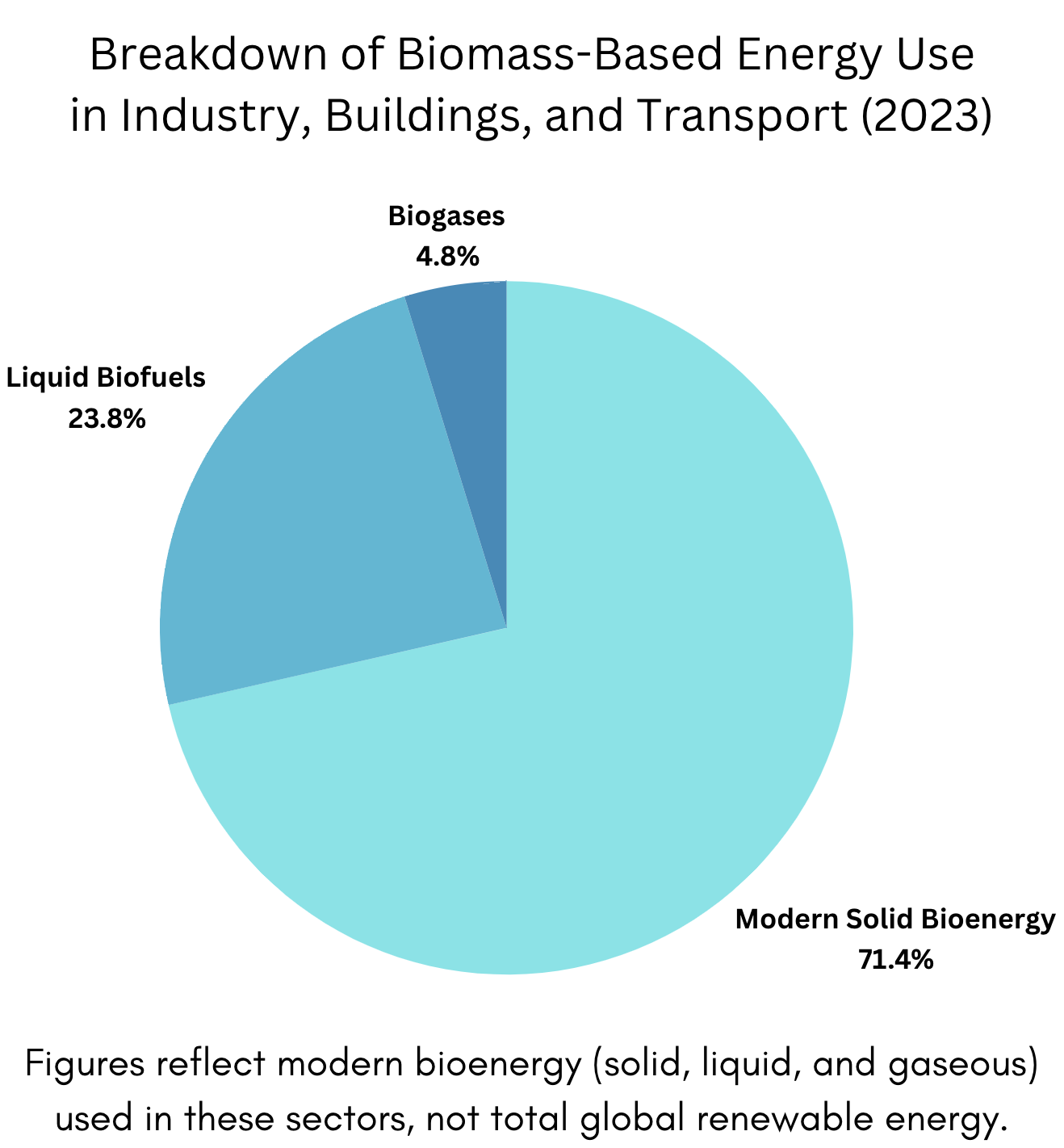Bioenergy is renewable energy produced from biomass – organic matter that can be used to produce heat, transportation fuels, and electricity. Bioenergy is considered a renewable energy option, because unlike coal or gas, organic plant and animal matter can easily be regenerated.
Woody biomass has traditionally been used for bioenergy. However, advances in technology have expanded potential resources to include oil seeds, algae and agricultural residues.
How do you create energy from biomass?
There are three processes that turn organic matter into energy:
- Chemical – uses chemical agents to break down the matter and convert it into a liquid fuel. An example would be corn ethanol which is a liquid fuel created from corn.
- Thermal – the major methods of thermal conversion are: combustion in excess air, gasification (reacting the material at high temperatures, without combustion) in reduced air, and pyrolysis (chemically decomposing a material into one or more recoverable substances by heating) in the absence of air.
- Biochemical – use of microorganisms, enzymes, and bacteria to breakdown organic matter into liquid or gaseous fuels.
The process used depends on the type of biomass. For example, dry feedstocks are burnt in furnaces, while wet feedstocks are left to rot in sealed tanks where they create biomethane gas.
Modern technologies have helped improved efficiency and reduced emissions. For example, novel gasification and pyrolysis techniques are now optimized to maximize energy yield and minimize environmental impacts.
Bioenergy accounts for almost a tenth of the global primary energy supply
Traditionally, bioenergy has contributed roughly 9% to the global primary energy supply, primarily in developing countries for cooking and heating.
As of 2025, modern bioenergy is at the forefront of renewable fuel growth. According to recent analysis by the International Energy Agency (IEA), modern bioenergy — including solid, liquid, and gaseous fuels — is expected to lead renewable fuels growth, potentially reaching nearly 6% of global energy demand in industry, buildings, and transport by 2030.


Environmental impact
Plants that are the source of biomass capture a nearly equivalent amount of CO2 through photosynthesis while they are growing (which can make biomass a carbon-neutral energy source). However, environmental organizations such as Greenpeace have raised concerns about the impact of forest bioenergy.
“Using forests to produce energy is like pouring gasoline to put out a fire” said Larry Edwards, a Greenpeace-US forest campaigner. “Science shows that it can take decades for new trees to absorb the carbon that escapes when we burn timber from existing forests.”
In addition, because any part of a tree can be burned, there are concerns that harvesting trees for energy production encourages Whole-Tree Harvesting. Whole-Tree Harvesting removes more nutrients and soil cover from the site than conventional harvesting and can be harmful to the long-term health of a forest.
Supportive policies
The rapid evolution of the bioenergy sector is also being driven by supportive policies. Over 80 countries have implemented mandates and incentives to boost liquid biofuel production, while regions like India, China, Brazil, the United States, and Europe are leading the way in modern bioenergy adoption.
The IEA highlights that bioenergy accounts for 95% of the forecasted growth in renewable fuels over the coming years, underlining its crucial role in reducing greenhouse gas emissions and enhancing energy security.
